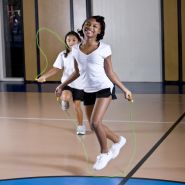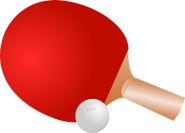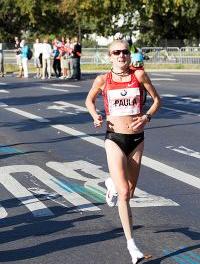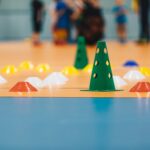It was a beautiful sunny day in St Anton, Austria and two snowboarders were cutting their way through the snow high in the mountains. They’d already done this route an hour previously and so were really enjoying the weather, laughing and having a great time.
And then one snowboarder disappeared over a lip and it was 10 minutes later that his friend found him lying unconscious in the snow. This was the scenario that was presented to our family when we heard about my brother’s accident back in March 2000.
Doctors told us that whilst he was in a coma, they were unable to tell us of the exact damage that had been caused to his brain by the accident. But there would be damage, the extent of which we only found out when George came out of the coma some 10 days later.
George gained consciousness with complete paralysis on his left-hand side and unable to speak and unable to read, a dreadful outcome for such an active individual. We naturally deduced from that that he had suffered an injury to the right hand side of his brain which caused the hemiplegia on the left side of his body.
Although his ability to speak and read slowly recovered themselves, the left-hand side of his body was caught in spastic tension and he was confined to a wheelchair. But after a gruelling and intensive 4 months of hard physio work, George was able to leave Austria on crutches.
And so, back in the UK, George began the long haul back to good health. He continued with physiotherapy four times per week as an out-patient for the next two years. When the doctors decided that he had attained a ‘normal gait’, he was thus discharged from the care of the NHS.
But George being George, he wasn’t satisfied with his condition and was determined that he would snowboard and sail to the excellent levels he had enjoyed before his accident. Additionally, his left-hand side still didn’t feel like it was part of him, part of his body.
The sense of ‘knowing’ where and what your limbs are doing is known as proprioception. It is also often referred to as the ‘sixth sense’ and was developed by the nervous system as a means to keep track of and control the different parts of the body. This system is usually subconscious, so we can move our limbs, knowing where and what they are doing, with very little conscious thought.
Following an injury, however, the receptors within our proprioceptive system are also damaged, which means the information that is usually sent to the brain is impaired. To compensate for this damage, the process is therefore carried out in more conscious and calculated steps and so the individual has to use different cues to help compensate for the lost feedback.
George found that by starting to skip as part of his rehabilitation therapy, he started rebuilding the neural pathways to regain full control over his left-hand side; skipping helped to redefine his spatial awareness, giving his proprioceptive system a much-needed boost and as much as it recovered his coordination in general, additionally improving his fine motor skills, the physical benefits included general weight loss and a massive boost to his muscle tone.
After a year of applied skipping, George was a firm believer in the physical and mental benefits of skipping and this lead him into skipping coaching.
In due course, George gained qualifications in Beginner, Intermediate and Advanced Skipping Coaching through the British Rope Skipping Association and has enjoyed coaching thousands of children in hundreds of schools over the last 10 years.
The benefits of skipping, or jump rope as it is in the US, are slightly wider-reaching for primary school age children. Susan Johnson MD notes that “Children who have difficulties with sitting still, paying attention, and visual processing/visual memory skills, that impact reading, writing, spelling, and mathematics, need movement therapies that strengthen proprioception.” And one of the specific skills she lists as being of invaluable help to children is skipping.
She says “The truth is that children should be only taught to write, read, and spell when their neurological pathways for writing, reading, and spelling have fully formed.” And how do you set about helping these neurological pathways to form?
“The proprioceptive system is developed and strengthened in children by having them do large and small physical movements, especially movements where they experience pressure, using their fingers, hands, arms, trunks, legs, and feet.
Movements like circle games where their hands are clapping and feet are stomping, jumping, hopping, galloping, and skipping are all wonderful activities for developing and strengthening proprioceptive pathways.”
She additionally links the ability to skip in cross-lateral movements with judging whether a child is able to start learning how to read. “If children can move their opposite arms and legs at the same time, the right and left hemispheres of their brains are “talking with” or connected to each other.
If children can only skip using their feet or only skip extending the same arm with the same leg (i.e. the homolateral skip), they are not yet ready to read, since they cannot access both sides of their brain simultaneously. [Skipping] by themselves in a flowing double jump pattern for every single swing of the rope, both forwards and backwards, also means that bilateral integration pathways are forming.”
Everyone can probably guess that skipping is extremely good for you, from building a strong core facilitating balance and fluidity in movement to building stamina but the ‘brain gym’ benefits can certainly help schools come to the assistance of pupils who are academically challenged.
And with additional talk recently about ‘PE Homework’ as well as how boys and more so girls are missing out on physical activity further up the academic line, the benefits of skipping are all too evident: portable, inclusive, self-challenging and self-regulating, individual and team, at home and at school.
Jump in!
Christina Kubu, Sports Skipping for Schools Ltd.
Does your school include skipping in your PE department? Let us know in the comments below!









